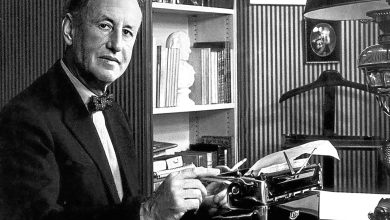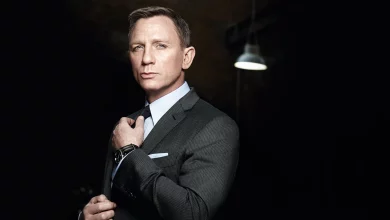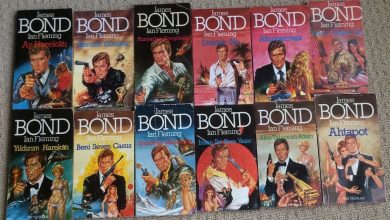Unraveling the Enigma: Why Did the James Bond Movie Spectre Cost $300 Million?

The James Bond film franchise has captivated audiences for decades, with its thrilling espionage, iconic characters, and dazzling action sequences. One installment that stood out in terms of production budget was the 2015 film “Spectre,” which boasted an astounding $300 million price tag. In this article, we delve into the various factors that contributed to Spectre’s monumental cost, examining everything from production design and international locations to the star-studded cast, high-octane action, and cutting-edge visual effects. By unraveling the enigma behind Spectre’s budget, we gain a deeper understanding of the dedication and resources required to bring this cinematic masterpiece to life.
Key Takeaways
- Ambitious Production Design: Spectre spared no expense in creating opulent sets and meticulously crafted environments to transport audiences into the world of James Bond.
- All-Star Cast and Crew: The involvement of renowned actors and top-tier professionals, including Daniel Craig and director Sam Mendes, contributed to the film’s elevated budget.
- Jaw-Dropping Action Sequences: Spectre aimed to push the boundaries of action, resulting in high-octane sequences that demanded substantial financial resources for stunts, special effects, and cutting-edge technology.
- Visual Spectacle: The film utilized state-of-the-art visual effects to seamlessly blend practical and digital elements, enhancing the grandeur and immersive experience of Spectre.
- Extensive Marketing Efforts: A robust marketing campaign was instrumental in creating anticipation and ensuring the film’s success, adding to the overall budget of Spectre.
The Spectacular World of James Bond
As the iconic secret agent, James Bond, embarks on his daring missions, the films strive to create a larger-than-life experience for the audience. This grandeur demands substantial financial resources to construct extravagant sets, procure high-end vehicles, and orchestrate breathtaking action sequences. Spectre, being the 24th installment in the Bond series, aimed to surpass all previous films in terms of scale and spectacle.
Production Design and Locations
One of the significant expenses in creating Spectre was the meticulous production design. The film featured opulent and meticulously crafted sets that required substantial investments. From the dazzling interior of Blofeld’s lair to the sprawling Day of the Dead parade in Mexico City, no expense was spared in bringing the director’s vision to life.
Moreover, Spectre ventured into various breathtaking international locations, including London, Rome, Tangier, and Austria. Securing permissions, travel arrangements, accommodations, and logistics for filming in these locations added to the overall production costs. The film’s desire to capture the essence of these diverse settings necessitated a significant financial commitment.
All-Star Cast and Crew
Bringing together a star-studded cast and crew undoubtedly contributed to the hefty budget of Spectre. Daniel Craig reprised his role as James Bond, and his involvement demanded a substantial portion of the production budget. Additionally, acclaimed actors such as Christoph Waltz, Léa Seydoux, and Ralph Fiennes added to the film’s financial burden.
Behind the scenes, the film boasted a crew comprising top-notch professionals in their respective fields. Acclaimed director Sam Mendes, renowned cinematographer Hoyte van Hoytema, and esteemed costume designer Jany Temime all commanded substantial fees commensurate with their expertise. The caliber of talent involved in Spectre significantly escalated the overall cost of production.
Stunts and Action Sequences
The heart-pounding action sequences and adrenaline-fueled stunts are integral to the James Bond franchise. Spectre aimed to surpass its predecessors in terms of spectacle and intensity, which naturally demanded significant financial resources. From the thrilling car chase through the streets of Rome to the breathtaking helicopter sequence in Austria, the film spared no expense to deliver unparalleled thrills to its audience.
Stunt coordination, special effects, and the use of cutting-edge technology played a pivotal role in realizing these high-octane sequences. The expenses associated with safety precautions, equipment, and the employment of skilled stunt performers contributed to the overall budget of Spectre.
Visual Effects and Post-Production
In the digital era, visual effects have become an indispensable component of modern filmmaking. Spectre featured an array of visually stunning effects that seamlessly blended into the narrative. The film employed state-of-the-art techniques to bring to life its larger-than-life action set pieces and awe-inspiring locations.
The post-production phase of Spectre involved a team of talented professionals working tirelessly to refine the film’s visuals, sound design, and overall cinematic experience. The cost of visual effects, sound mixing, color grading, and editing further added to the financial investment required for Spectre.
Marketing and Promotion
A film of Spectre’s magnitude demanded an extensive marketing campaign to generate buzz and attract audiences worldwide. Promotional activities, including trailers, posters, and press events, incur substantial costs. The marketing strategy for Spectre was strategically designed to create anticipation and ensure the film’s success at the box office.
FAQ: Unraveling the Enigma of Spectre’s $300 Million Budget
- Why did Spectre have such a high production budget? Spectre’s high production budget can be attributed to several factors. Firstly, the film aimed to deliver an unparalleled cinematic experience, surpassing previous James Bond installments in terms of scale and spectacle. This required substantial investments in production design, including the creation of opulent sets and the meticulous recreation of international locations. Additionally, assembling an all-star cast and crew, featuring top-tier talent like Daniel Craig and director Sam Mendes, commanded significant financial resources. The film’s commitment to high-octane action sequences, visual effects, and a robust marketing campaign further contributed to its elevated budget.
- How were the international locations chosen for Spectre? The international locations featured in Spectre were carefully selected to enhance the film’s narrative and provide a visually captivating backdrop. The production team sought to capture the essence of different cities and countries to immerse audiences in the world of James Bond. Locations such as London, Rome, Tangier, and Austria were chosen for their iconic landmarks, cultural significance, and their ability to contribute to the overall cinematic experience. Securing permissions, arranging logistics, and accommodating the cast and crew in these diverse locations added to the film’s budget but ultimately contributed to the authenticity and grandeur of Spectre.
- What were the major expenses in creating Spectre’s production design? Spectre’s production design required substantial financial investment to bring the director’s vision to life. The film featured opulent and meticulously crafted sets that reflected the luxurious and high-stakes world of James Bond. From the intricate interior of Blofeld’s lair to the vibrant Day of the Dead parade, no detail was overlooked. The expenses encompassed the construction of elaborate sets, the procurement of high-quality materials, and the hiring of skilled artisans and craftsmen. The attention to detail and the desire to create visually stunning environments drove the production design costs for Spectre.
- How did the cast and crew contribute to the film’s budget? The cast and crew of Spectre played a significant role in driving up the film’s budget. Acclaimed actors like Daniel Craig, Christoph Waltz, Léa Seydoux, and Ralph Fiennes demanded substantial fees commensurate with their talent and star power. Similarly, renowned director Sam Mendes and other top-notch professionals in various departments, such as cinematography and costume design, commanded significant financial resources. Their involvement elevated the quality and prestige of the film but also contributed to the overall budget.
- What were the key elements in Spectre’s action sequences? Spectre’s action sequences were a pivotal aspect of the film’s appeal, necessitating a considerable budget. The film aimed to deliver heart-pounding thrills and adrenaline-fueled stunts that surpassed its predecessors. The key elements in these sequences included meticulous stunt coordination, special effects, and the utilization of cutting-edge technology. Safety precautions, equipment, and the employment of skilled stunt performers all contributed to the costs associated with these high-octane moments, ensuring that the action in Spectre was nothing short of breathtaking.
- How did visual effects contribute to Spectre’s budget? Visual effects played a crucial role in realizing Spectre’s larger-than-life action set pieces and awe-inspiring locations. The film employed state-of-the-art techniques to seamlessly blend practical and digital effects, creating a visually stunning cinematic experience. The costs associated with visual effects include the employment of talented visual effects artists, the use of advanced software and hardware, and the extensive post-production process required to integrate the effects into the final film. The investment in visual effects was instrumental in bringing the director’s vision to fruition and delivering a visually captivating spectacle to audiences.
- What were the expenses involved in Spectre’s post-production phase? The post-production phase of Spectre involved a team of skilled professionals working tirelessly to refine the film’s visuals, sound design, and overall cinematic experience. The costs associated with post-production encompassed various aspects, including visual effects, sound mixing, color grading, and editing. Skilled visual effects artists worked to seamlessly integrate CGI and practical effects, while sound designers meticulously crafted immersive audio landscapes. Additionally, the film’s editing process required dedicated time and resources to ensure a cohesive narrative. The combination of these elements contributed to the film’s overall budget.
- How did marketing and promotion impact the budget of Spectre? Marketing and promotion played a vital role in creating anticipation and ensuring the success of Spectre at the box office. Extensive marketing campaigns encompassing trailers, posters, press events, and advertising required substantial financial investments. These promotional activities aimed to generate buzz, attract audiences worldwide, and establish Spectre as a must-see cinematic event. The strategic planning, creative execution, and global reach of the marketing efforts contributed to the overall budget of the film.
- Did the extravagant budget translate into box office success? While the $300 million budget of Spectre was undeniably substantial, the film’s box office success justified the investment. Spectre grossed over $880 million worldwide, making it one of the highest-grossing films in the James Bond franchise. The film’s visually stunning sequences, star-studded cast, and captivating storyline resonated with audiences, resulting in a significant return on investment. Despite the high production costs, Spectre’s box office performance proved that the investment in creating a grand cinematic experience can yield substantial financial rewards.
- How does Spectre’s budget compare to other James Bond films? Spectre’s $300 million budget places it among the most expensive James Bond films to date. The film’s ambition to deliver a larger-than-life cinematic experience and its focus on visual spectacle contributed to its elevated budget. However, it is worth noting that the Bond franchise has a history of substantial budgets due to its emphasis on high-quality production design, international locations, and action sequences. Spectre’s budget reflects the continued commitment of the franchise to push the boundaries of cinematic excellence and deliver a thrilling experience to audiences worldwide.
Conclusion
The $300 million budget of the James Bond film Spectre was a testament to the grandeur and ambition of modern-day filmmaking. From the meticulous production design to the star-studded cast, jaw-dropping action sequences, and cutting-edge visual effects, every aspect of Spectre demanded substantial financial investment. The film’s ability to transport audiences into the thrilling world of James Bond hinged upon these resources. Spectre not only delivered on its promise of spectacle but also proved its box office success, demonstrating that the investment in creating a cinematic masterpiece can yield significant returns. As the Bond franchise continues to push the boundaries of cinematic excellence, the budget of Spectre serves as a reminder of the dedication and resources required to bring larger-than-life stories to the silver screen.








